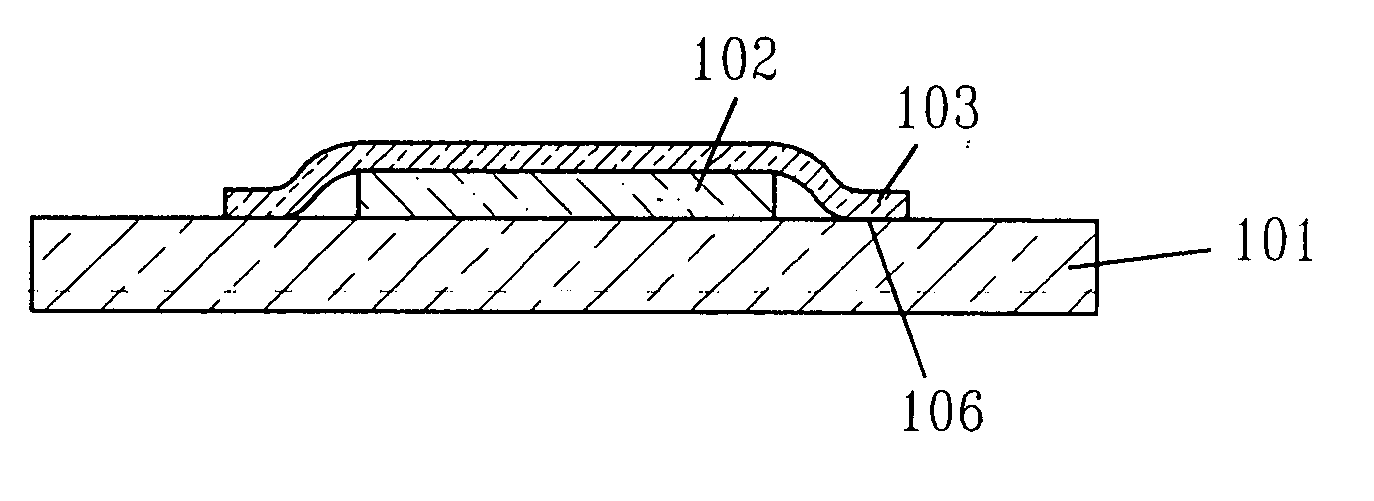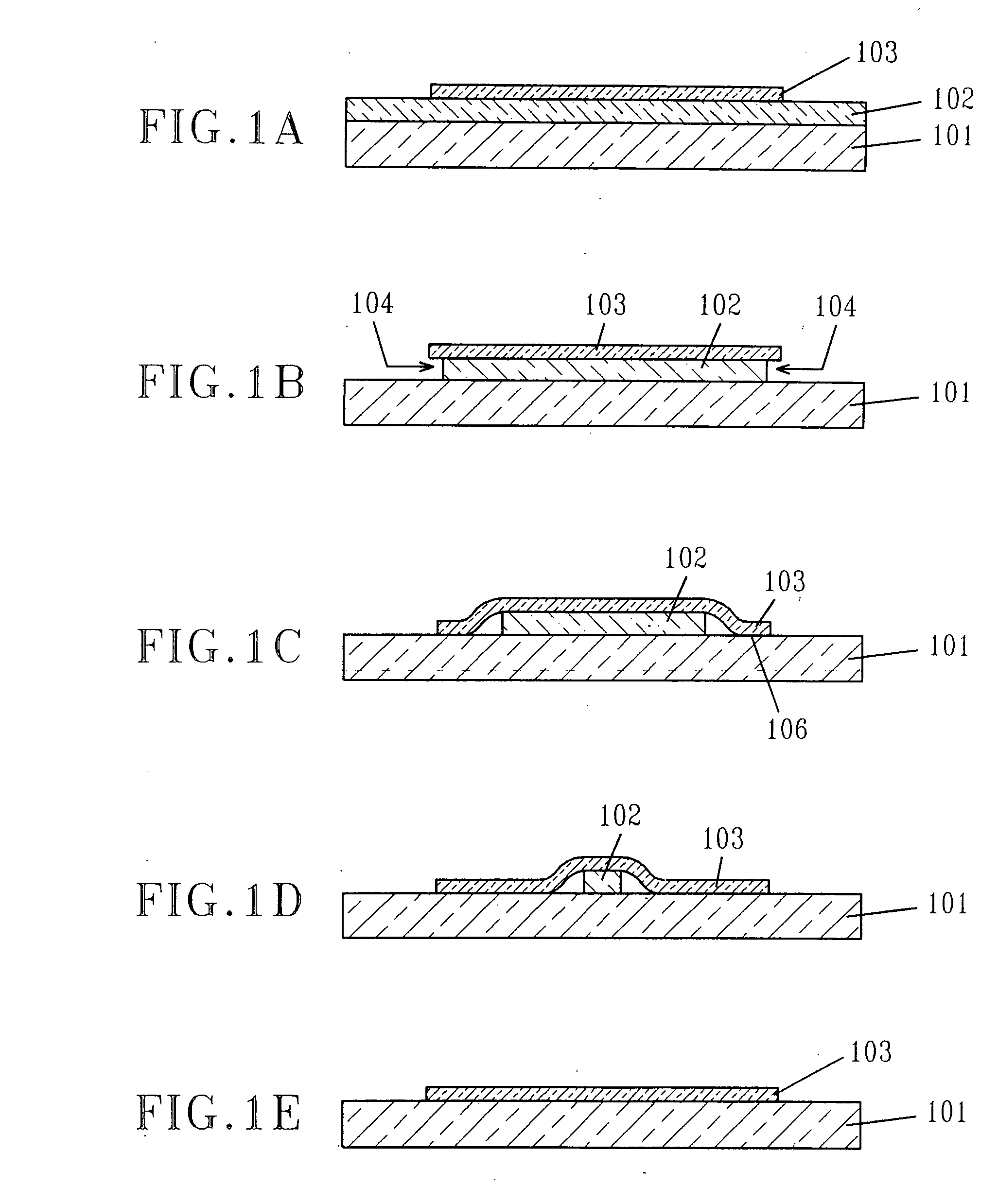In-place bonding of microstructures
- Summary
- Abstract
- Description
- Claims
- Application Information
AI Technical Summary
Benefits of technology
Problems solved by technology
Method used
Image
Examples
example 1
[0043]FIG. 8A shows a scanning electron microscope (SEM) image of a cross section through a micro-slab for which the etching was incomplete (corresponding to FIG. 1C of the invention). The SOI thickness was 55 nm and the buried oxide was 145 nm. The total micro-slab size was about 5×5 microns. The edges of the slab were bonded to the substrate while the center part lies on the unetched portion of the buried oxide.
[0044]FIG. 8B shows a tilted view, SEM image of a sample for which the etching of the buried oxide was completed. The micro-slabs were 8.5×8.5 microns in size. The SOI thickness was 55 nm. As can be seen and was further confirmed by Atomic Force microscope (AFM) measurements, the micro-slabs lied flat on the substrate. Additionally, the micro-slabs maintained their exact relative position as was before the buried oxide was etched away. The edge of the sample was obtained by cleaving the wafer into two parts. The wafer was not annealed, so the micro-slabs were held to the s...
example 2
[0045]FIG. 8C shows an SEM image of an array of micro-slabs having a gear shape that were bonded using the in-place bonding technique of the present invention. Each micro-slab consisted of a tri-layer film stack of Si / SiGe / Si. The total film stack thickness was about 340 nm with each Si film being about 20 nm thick. The Ge concentration in the SiGe alloy was about 20%. As discussed earlier, the micro-slabs maintained their exact relative position as was before the etching of the buried oxide. The image corresponds to the process step shown in FIG. 2D of the present invention. During the buried oxide etch, the strain in the SiGe film transfered to the top and bottom Si layers. The strain transfer was verified by a high-resolution x-ray diffraction (HRXRD) measurement of the sample, which measures the Bragg angle, θB corresponding to the out-of-plane lattice constant of the different layers in the structure. FIG. 8D shows a 004 diffraction map of the sample shown in FIG. 8C. As can be...
PUM
 Login to View More
Login to View More Abstract
Description
Claims
Application Information
 Login to View More
Login to View More - R&D
- Intellectual Property
- Life Sciences
- Materials
- Tech Scout
- Unparalleled Data Quality
- Higher Quality Content
- 60% Fewer Hallucinations
Browse by: Latest US Patents, China's latest patents, Technical Efficacy Thesaurus, Application Domain, Technology Topic, Popular Technical Reports.
© 2025 PatSnap. All rights reserved.Legal|Privacy policy|Modern Slavery Act Transparency Statement|Sitemap|About US| Contact US: help@patsnap.com



